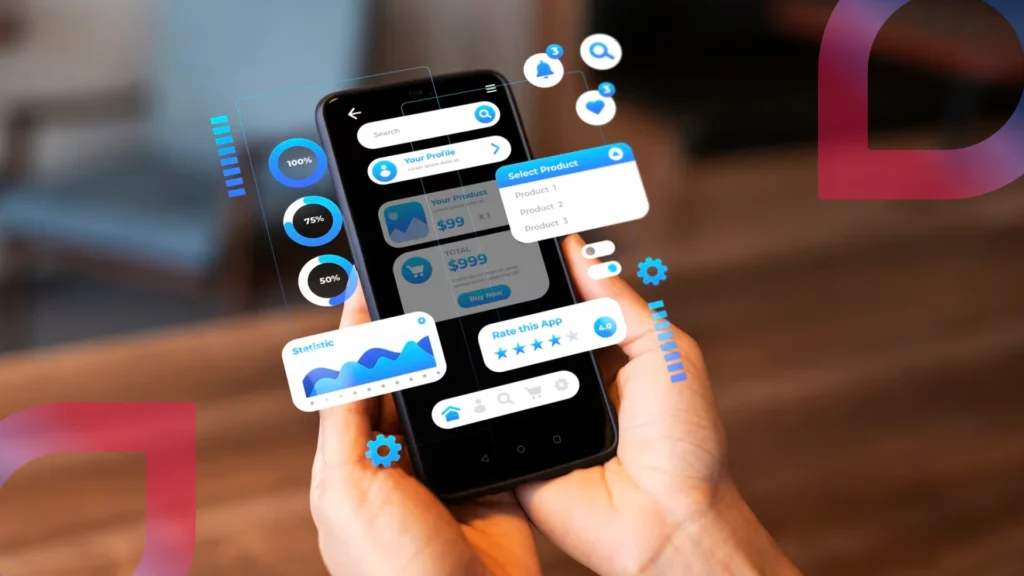Level up your business with US.
- Home
- Top Mobile App Security Challenges in 2025 and How to Overcome Them
Top Mobile App Security Challenges in 2025 and How to Overcome Them
September 5, 2025 - Blog
Top Mobile App Security Challenges in 2025 and How to Overcome Them
Mobile apps have become the backbone of modern life. From banking and shopping to healthcare and education, users rely on apps to manage their daily activities. By 2025, mobile app adoption has skyrocketed, but with it comes an alarming rise in cybersecurity threats. Hackers are constantly evolving their methods, targeting sensitive user data, financial information, and corporate systems.
For businesses, ensuring mobile app security is no longer optional—it is mission-critical. A single data breach can lead to financial losses, regulatory fines, and irreparable brand damage. In this blog, we’ll explore the top mobile app security challenges in 2025 and discuss how organizations can overcome them with the help of code-driven labs.

Why Mobile App Security Matters in 2025
The mobile ecosystem in 2025 is more complex than ever:
-
Apps must run seamlessly across multiple platforms, devices, and operating systems.
-
Users expect convenience, often sacrificing security for ease of use.
-
The rise of fintech, healthcare apps, and IoT-connected applications increases the amount of sensitive data at risk.
-
Regulations such as GDPR, HIPAA, and PCI-DSS require strict compliance.
In such an environment, businesses must prioritize robust security practices to protect both users and their own systems.
Top Mobile App Security Challenges in 2025
1. Data Breaches and Unauthorized Access
With more apps storing personal and financial data, breaches remain one of the biggest threats. Cybercriminals exploit weak authentication mechanisms, insecure APIs, or poor encryption to gain access.
Solution: Implement end-to-end encryption, multi-factor authentication, and strict access controls. Regularly audit systems to identify vulnerabilities.
2. Insecure APIs
APIs power most modern mobile apps by enabling communication between systems. However, poorly secured APIs expose sensitive data and open doors for attackers.
Solution: Use secure authentication protocols like OAuth 2.0, validate inputs, and monitor API traffic with automated testing tools.
3. Malware and Trojan Injections
Hackers often trick users into downloading apps laced with malware. Once installed, these apps can steal data, track user activity, or compromise devices.
Solution: Use strong code obfuscation, app-signing certificates, and runtime checks to prevent tampering. Encourage users to download only from trusted app stores.
4. Weak Authentication and Authorization
Many apps still rely on simple passwords, making them easy targets for brute-force or credential-stuffing attacks.
Solution: Implement biometric authentication (fingerprint, facial recognition) and token-based authorization. Avoid storing credentials on devices.
5. Data Storage Vulnerabilities
Storing sensitive data insecurely on a device leaves it open to theft if the phone is lost, stolen, or hacked.
Solution: Minimize on-device storage, encrypt data at rest, and leverage secure cloud solutions.
6. Man-in-the-Middle (MITM) Attacks
Hackers intercept communication between the app and the server on unsecured networks, stealing login details or financial transactions.
Solution: Use SSL/TLS protocols, enforce HTTPS connections, and deploy certificate pinning to prevent interception.
7. Reverse Engineering
Attackers often decompile apps to analyze their source code, identify vulnerabilities, or create malicious clones.
Solution: Apply code obfuscation, use anti-tampering mechanisms, and employ runtime security monitoring to detect suspicious behavior.
8. Supply Chain Attacks
With mobile apps depending heavily on third-party SDKs and libraries, a compromised dependency can infect the entire application.
Solution: Regularly audit third-party code, use trusted libraries, and update dependencies frequently to patch vulnerabilities.
9. Phishing Attacks
Mobile users are increasingly targeted through phishing attempts disguised as app notifications or in-app prompts.
Solution: Implement strong user education programs, integrate AI-driven anomaly detection, and validate all app interactions against secure endpoints.
10. Regulatory and Compliance Risks
In 2025, global compliance standards around data privacy are stricter than ever. Non-compliance can result in heavy fines and reputational loss.
Solution: Incorporate compliance checks into development pipelines, regularly test apps against regulations, and update policies as laws evolve.
How Code-Driven Labs Help Overcome Security Challenges
Building secure mobile apps in 2025 requires more than traditional testing. Security must be integrated into every phase of development. This is where code-driven labs prove invaluable. They provide automated, scalable, and intelligent environments to test and validate apps against evolving threats.
1. Automated Security Testing
Code-driven labs integrate automated tools to detect vulnerabilities such as insecure APIs, weak authentication flows, or unencrypted data storage. This speeds up detection and remediation.
2. Continuous Integration and Continuous Deployment (CI/CD)
Labs incorporate CI/CD pipelines to ensure every code change is automatically tested for security flaws before deployment. This prevents vulnerabilities from slipping into production.
3. Real-World Attack Simulations
Code-driven labs simulate scenarios such as MITM attacks, reverse engineering attempts, or heavy load traffic, giving developers insights into how apps perform under hostile conditions.
4. Multi-Device and Cross-Platform Validation
With diverse devices and OS versions, labs test security across environments to ensure consistency, scalability, and user protection.
5. API Security Testing
Since APIs are critical attack points, labs validate authentication mechanisms, input validation, and traffic monitoring. This ensures APIs meet both performance and security requirements.
6. Regulatory Compliance Checks
Labs automate compliance validation for frameworks like GDPR, HIPAA, and PCI-DSS. This minimizes legal risks and ensures apps meet industry standards.
7. Continuous Monitoring
Post-deployment, code-driven labs enable continuous monitoring of app security, alerting developers to new vulnerabilities and emerging threats.
8. Secure Code Practices
By integrating static and dynamic code analysis, labs help enforce secure coding standards, preventing vulnerabilities at the development stage itself.
Business Benefits of Secure Apps with Code-Driven Labs
By addressing mobile app security challenges with the support of code-driven labs, businesses can unlock significant benefits:
-
User Trust: Secure apps build confidence, encouraging higher adoption and retention.
-
Faster Time-to-Market: Automated testing pipelines accelerate release cycles without compromising security.
-
Reduced Costs: Fixing vulnerabilities early prevents expensive breaches and compliance penalties.
-
Scalability: Apps can handle large user bases without security trade-offs.
-
Competitive Advantage: Security becomes a brand differentiator in industries like finance, healthcare, and e-commerce.
The Future of Mobile App Security
As technology advances, so will security threats. Trends shaping the future include:
-
AI-Powered Threat Detection: Using machine learning to detect and respond to anomalies in real time.
-
Zero-Trust Architectures: Enforcing stricter identity verification for every user and device.
-
Quantum-Safe Encryption: Preparing apps for the post-quantum era of cybersecurity.
-
Decentralized Security Models: Leveraging blockchain for secure transactions and identity management.
Businesses that adopt proactive security practices, backed by code-driven labs, will remain resilient against future threats.
Conclusion
Mobile apps in 2025 face unprecedented security challenges, from insecure APIs and malware injections to phishing and compliance risks. As the digital ecosystem grows, businesses cannot afford to treat security as an afterthought.
By embracing strategies like encryption, multi-factor authentication, secure coding practices, and compliance monitoring, companies can safeguard their users and reputations. However, the complexity of modern threats requires advanced solutions. This is where code-driven labs excel—offering automated testing, real-world simulations, and continuous monitoring that empower developers to build secure, scalable, and trustworthy mobile apps.
In the competitive digital landscape of 2025, businesses that pair robust security strategies with the power of code-driven labs will not only protect their apps but also gain a lasting edge in user trust, compliance, and innovation.
